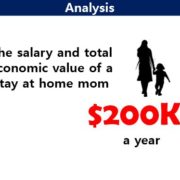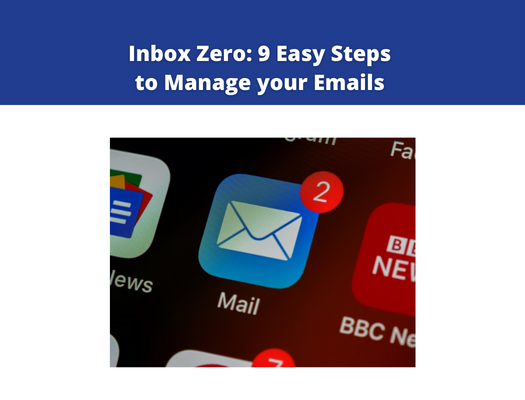Every hour these days I’m being served some advertisement that promises that if I only follow these X number of steps, I too could be pulling in eye popping revenue each day for my business.
Okay, says the cynic in me. The only reason these ads exist, is because these businesses are there to make money. And if it were that easy, all of us would be rich. In fact, I often use that exact phrase, “If it were that easy, all of us would _______” (be healthy, be perfect parents, be debt free, be successful in work). It is not that easy because it’s not!
I have been a part of three internet startups, started my own side hustle photography business, started this blog / passion project, and at my full hustle I see a lot of businesses trying to grow. If there is something I can impart on you, it is – being a business owner is not easy. In fact, for most people, I strongly recommend honing and refining your ability to hold on to a day job. There are a lot of barriers to being an entrepreneur, and I rarely see anyone who can truly print money – unless they’re some brilliant algorithmic trader. So, here are the startup secrets, that are not really secret, that I’ve learned from fantastic founders over time. This is not meant to discourage any of you from starting your own businesses – lifestyle businesses are easier (lifestyle businesses = businesses that typically pay for one person or a household’s needs, but not more than that). Scaled businesses that aim to grab as much market share as possible? Much harder.
Listen to your target customer and give them something they want
In the beginning we’re all too enamored with our own idea. I have great ideas. So do you. Ideas don’t make money if no one wants to pay for them, profitably. That’s why it’s important to talk to the people who you ultimately want to sell your product to, and understand what is making their lives painful right now. What is keeping them up at night? What is bringing them stress? What do they want to alleviate? People want to alleviate what are known as “pain points”.
I started out as a wedding photographer because people always want wedding photography. However, as I learned over time, people’s idea of photography changed. When I started, I operated in an age where customers didn’t really want printed products, where most photographers made their money, and desired an option with digital products. Rather than try to fight the tide, I made the strategic decision to make all-digital packages as the de facto package that people would purchase, I just made sure it would make money. Did I personally like it? Not really! But was it what my customers wanted? Absolutely.
If you are able to have a way to plug into the thoughts of your target customer each day, that would be ideal. This is why for many of the best companies out there, listening to customer service is where they often get ideas for their next big thing. It’s how I do it for Save My Cents as well. Many of the most-often received questions I get in my direct messages on Instagram, often inspire my next big product launch. Five Weeks to Abundance, for example, was created when people told me they wanted to know how to get the same mindset I had to get to success and less fear.
Figure out your economics – controlling costs are key to surviving
A few years ago I had the pleasure of being in the presence of many female CEOs at a big networking conference. One of the most common paths I noticed among all of them on their path towards CEO was that many of them were COOs or did a good stint in operations.
Profits are the core of what keeps companies going. Without profits, eventually at some point, investor patience runs out, investor money runs out, and companies cease to exist. If you can get your unit economics (the economics of producing one unit of whatever you are selling) to be profitable, then you likely have a profitable company. Operations help make that possible.
All too many times people first focus on the top-line – the revenue number – which is important. You want a lot of revenue and you want revenue growth. However, the economics do catch up as your company matures, and you’ll have to make the tough decisions to change how you operate. That’s why the sooner you get to profitability, the more freedom you have as a company to operate.
My photography company became profitable within the first 2 years, and Save My Cents is profitable, though not exactly lucrative. For photography, I calculated the total number of hours I worked on any particular type of gig (lifestyle, engagement, wedding). This is how I did it
- Average time spent per inquiry, multiplied by the inverse of my conversion rate (so if 33% of inquiries converted into a sale, then I’d have to multiply the inquiry time by 3)
- Average time spent on the upfront prep per shoot
- Average time spent on the shoot & travel itself
- Average time spent on the back-end doing editing, uploading, back-up, and blogging
Then by summing up all the hours I could see how many hours each gig truly cost. I was limited in my time, I could only work at most 20 hours a week. Then I added up all my fixed costs. I knew that for the 20 hours a week I was willing to work, I had to make more than my fixed costs, make more than my variable costs, and account for taxes.
What I liked about my side companies is that because they are profitable, I don’t feel a total sense of angst for either of them if I need to take a break or if my priorities shift. For larger companies, getting to profitability can be quite challenging once you have committed promises such as leases for retail stores, plane leases for airlines, research and technology that you’ve invested in, for a biotech or pharma company. Knowing what I know now, I know it’s easier said than done, to suggest a company to focus on profits, but you can’t ultimate operate without them.
Be creative when it comes to overcoming regulatory / legal hurdles
It’s not that I see a lot of startups do illegal things (okay fine, many of them do), it’s more that, I see a lot of startups operate in a world of gray when it comes to regulation and legality. In the United States, affording legal protection is expensive, I get it, I feel the same! Doing things by the book is expensive. This is by no means me telling you to go and break the law – please don’t. However, it is me highlighting that if you’re a startup with very little money for legal fees, you have to move quickly and creatively. But do iron out your biggest blind spots and make sure that your intellectual property and work is not owned by anyone else. Don’t get into a situation where you are sued so badly by a giant corporation that you lose your fortune a hundred times over.
Most seemingly overnight successes came from people who have learned from prior failures
I love pointing to the story of Pokemon Go, which in 2016 seemingly exploded into an overnight success. Where did it come from? The founder, John Hanke, developed an interest in computer science back in high school, and worked for over a decade at Google on a related product that’d later be crucial to Pokemon Go’s success as well – geospatial software (Google Earth).
More recently, my total boss crush, Sarah Paiji Yoo, has been in business successfully with Blueland for three years and just launched the latest in her line of cleaning products with minimal plastic – a laundry tablet that does not use a plastic pouch. I personally use Blueland products not just because I’m Sarah’s friend, but because I really love the mission of the company as well and the products work great. Sarah and I go way back to 2010 when we first collaborated together on her very first startup, Snapette. I saw how little she slept, how little she ate, I saw her work day and night to get this company launched and later acquired. Sarah then went on to do gigs at several incredible DTC (direct to consumer) retail businesses including M. Gemi and Rockets of Awesome, and iterated on multiple ideas, before landing on Blueland.
I recently enjoyed listening to an old episode of NPR’s How I Built This featuring Melissa & Doug, a company that produces toys that don’t use batteries. They also learned to build their company over decades of time.
These are just three stories. They are not the exception. Whenever I peel back the layers to any successful company that I know of, I find stories like these – of sleepless nights and years of no contact with friends, to build companies from the ground up and be international success stories.
The risk of failure is very high – you can lose everything
I know of at least two companies that saved themselves by gambling it. Frederick Smith, the founder of FedEx, relied on blackjack winnings to keep the company going while fundraising. David Daneshgar, co-founder of Bloom Nation and a business school classmate of mine, raised the seed funding needed for the company also by participating in a poker tournament (he himself is one of the world’s top poker players).
These stores are the exceptions. I hear all the time of people whose families lost all their fortunes putting it all in one company. Investing firms lose money too. The BLS has published data for years showing that about 25% of new businesses make it past 15 years. Trying to start a company is a risky venture. I don’t see a lot of glamour in founding large-scale companies. I think some people do it out of pure love and passion. Others did it out of survival. Whatever the reason, one has to be all in and be prepared to lose it all as well.
So many of us are quick to feel “behind” when we read stories about wealthy business owners and the amount of money they generate. What I hope this blog post can illustrate is that nothing in life is guaranteed. Wealth comes and goes. The risk to do anything big is immense. There is no secret to success. To go for high rewards, high risk is often required.










